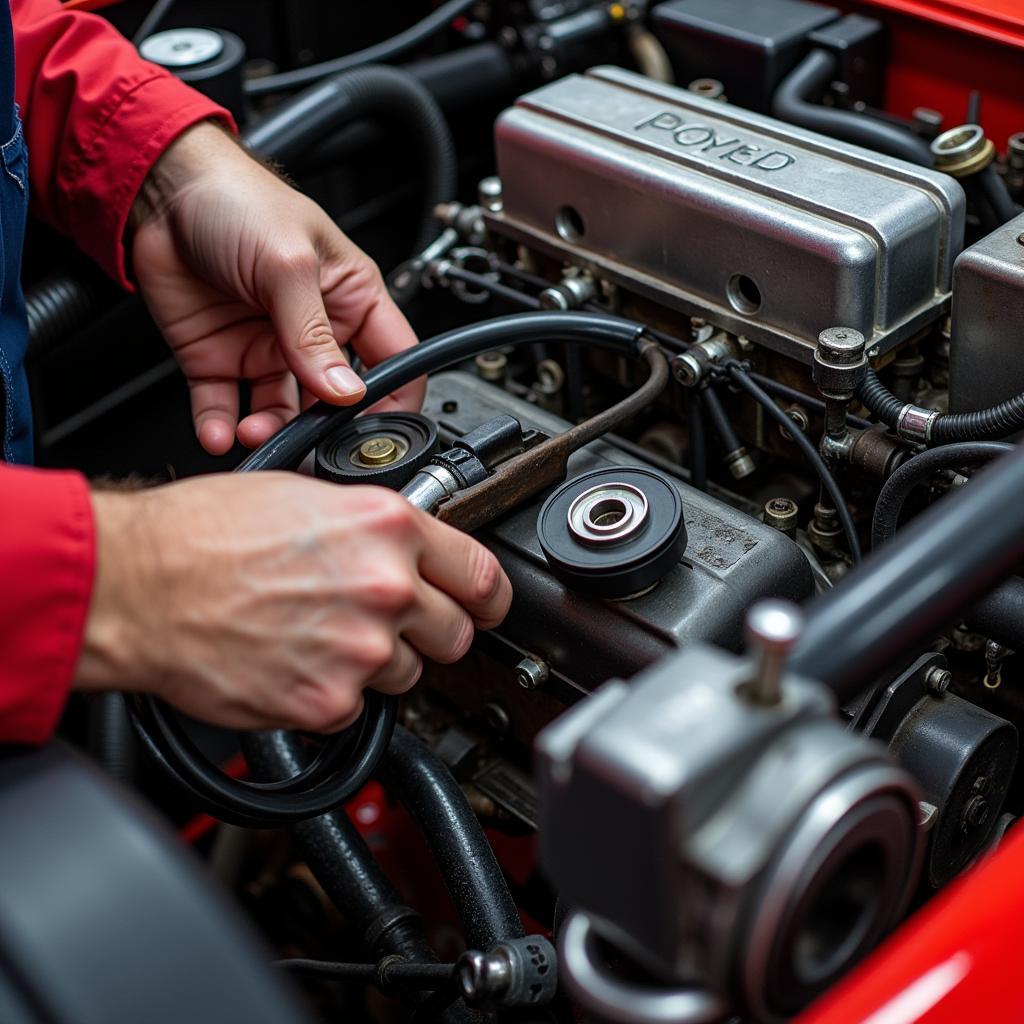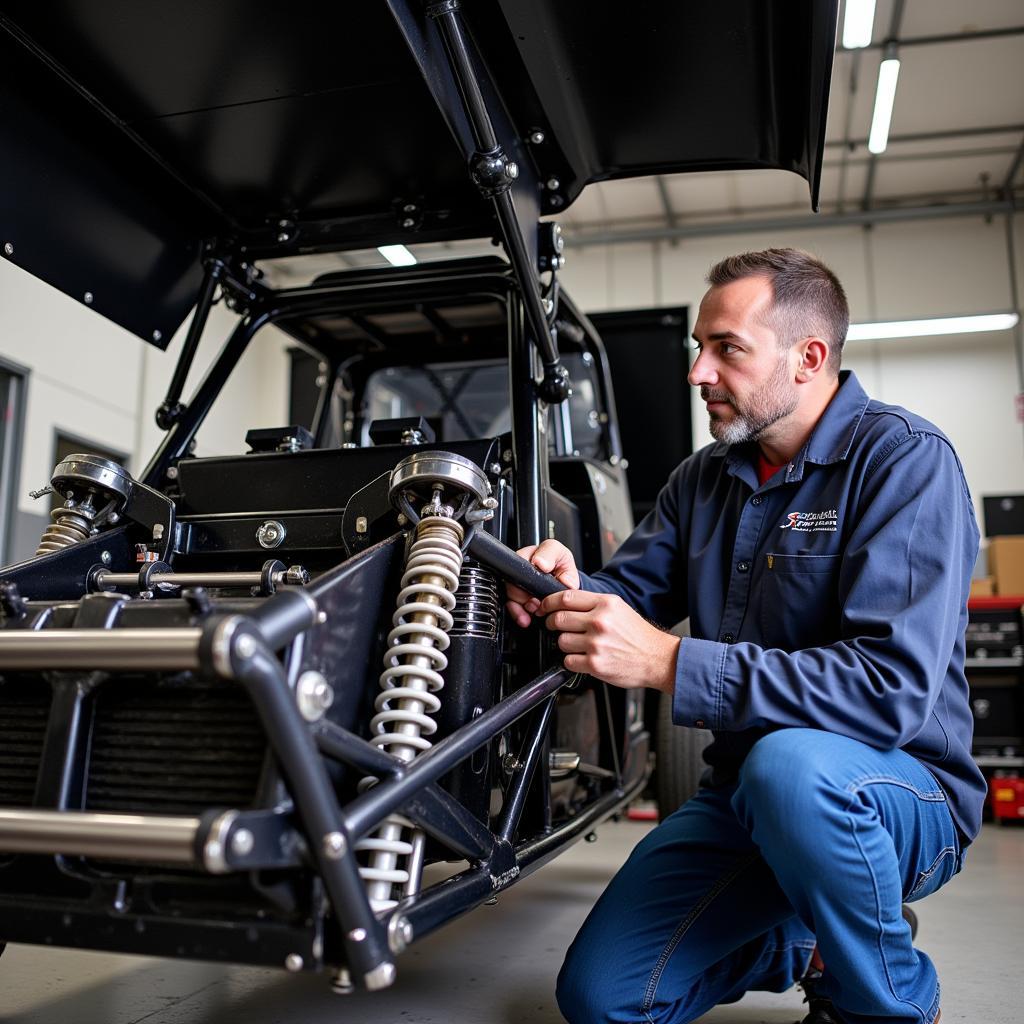A well-maintained sprint car is a fast car. Keeping your sprint car in top condition requires a regular maintenance routine. This checklist will guide you through the essential steps to ensure your car runs smoothly and consistently. It’s a crucial part of ensuring your car performs at its peak and minimizes downtime.
Getting Started: Before You Begin
Before you dive into your sprint car maintenance, gather the necessary tools and supplies. This includes:
- Essential tools: Wrenches, sockets, screwdrivers, torque wrench, jack, jack stands, and safety glasses.
- Fluids and supplies: Engine oil, transmission fluid, gear oil, brake fluid, coolant, air filter, fuel filter, spark plugs, cleaning supplies, and a grease gun.
- Technical manuals: Refer to your specific sprint car’s manual for detailed instructions and recommended specifications.
A Step-by-Step Guide:
Here’s a comprehensive checklist to guide you through the maintenance process:
1. Engine Inspection and Maintenance
- Oil Change: Change the engine oil and filter every 2-3 races or 20-30 hours of runtime. Check the oil level regularly to ensure it’s within the recommended range.
- Air Filter: Inspect and clean or replace the air filter every 2-3 races. A dirty air filter restricts airflow and can reduce engine performance.
- Fuel Filter: Check and replace the fuel filter every 3-4 races. A clogged fuel filter can cause engine problems and reduced performance.
- Spark Plugs: Inspect and replace spark plugs as needed, usually every 5-7 races. Worn spark plugs can lead to misfires and poor engine performance.
- Engine Cooling System: Check the coolant level and inspect for leaks. Flush the cooling system every 12-18 months or as recommended in your manual.
- Valve Adjustment: Check and adjust valve clearance as required, based on your specific engine type and manufacturer recommendations.
- Engine Belts: Inspect belts for wear and tear, including the alternator belt, water pump belt, and power steering belt. Replace worn belts immediately.
 Sprint car engine inspection
Sprint car engine inspection
2. Chassis Inspection and Maintenance
- Suspension: Inspect the suspension components for wear and tear. Check the shock absorbers, springs, and bushings for any signs of damage or deterioration.
- Steering: Inspect the steering components for wear and tear. Check the tie rods, ball joints, and steering wheel for any signs of play or looseness.
- Wheels and Tires: Inspect the wheels and tires for damage and wear. Check the tire pressure and tread depth regularly.
- Brakes: Inspect the brake pads and rotors for wear and tear. Check the brake fluid level and condition.
- Axle: Check for signs of excessive wear on the axle bearings and seals.
- U-Joints: Inspect the universal joints for wear and tear. Replace worn or damaged U-joints promptly.
 Inspecting the chassis of a sprint car
Inspecting the chassis of a sprint car
3. Body and Electrical System
- Bodywork: Inspect the bodywork for any damage or loose components. Repair or replace damaged parts as needed.
- Electrical System: Inspect the wiring harness, switches, and lights for any problems. Check for loose connections or damage.
- Battery: Check the battery terminals for corrosion and ensure the battery is fully charged.
Additional Considerations:
- Fuel: Use high-quality race fuel and avoid mixing different types of fuel.
- Lubrication: Lubricate all moving parts, including bearings, joints, and suspension components.
- Safety: Wear safety glasses, gloves, and appropriate clothing when working on your sprint car.
- Documentation: Keep track of all maintenance and repairs performed on your car.
Expert Advice from [Name of Expert], a veteran sprint car mechanic:
“A good sprint car maintenance routine is essential for consistent performance and a long car life. Don’t overlook the small details—every component plays a role in overall reliability.”
“Don’t be afraid to ask for help. There are many resources available to help you maintain your sprint car. Consult your manual, talk to experienced mechanics, and join online forums.”
Conclusion:
Regular maintenance is crucial for keeping your sprint car in peak condition. By following this checklist and paying attention to the details, you can ensure your car runs smoothly and consistently. Remember, preventative maintenance saves you time and money in the long run.
AutoTipPro is committed to helping you keep your sprint car in tip-top shape. Contact us today at +1 (641) 206-8880 for any maintenance needs, or visit our office at 500 N St Mary’s St, San Antonio, TX 78205, United States.
FAQ
Q: How often should I change the engine oil in my sprint car?
A: Change the oil every 2-3 races or 20-30 hours of runtime.
Q: What are some signs that my sprint car needs a brake inspection?
A: Signs include a spongy brake pedal, squeaking or grinding noises when braking, or a burning smell from the brakes.
Q: What should I do if I find a leak in my cooling system?
A: Immediately identify the source of the leak and repair it promptly.
Q: How often should I check the tire pressure on my sprint car?
A: Check tire pressure before and after each race, or before and after each practice session.
Q: What are some common mistakes that sprint car owners make when it comes to maintenance?
A: Common mistakes include neglecting to change the oil regularly, ignoring warning signs of problems, and using the wrong type of fuel.




Leave a Reply